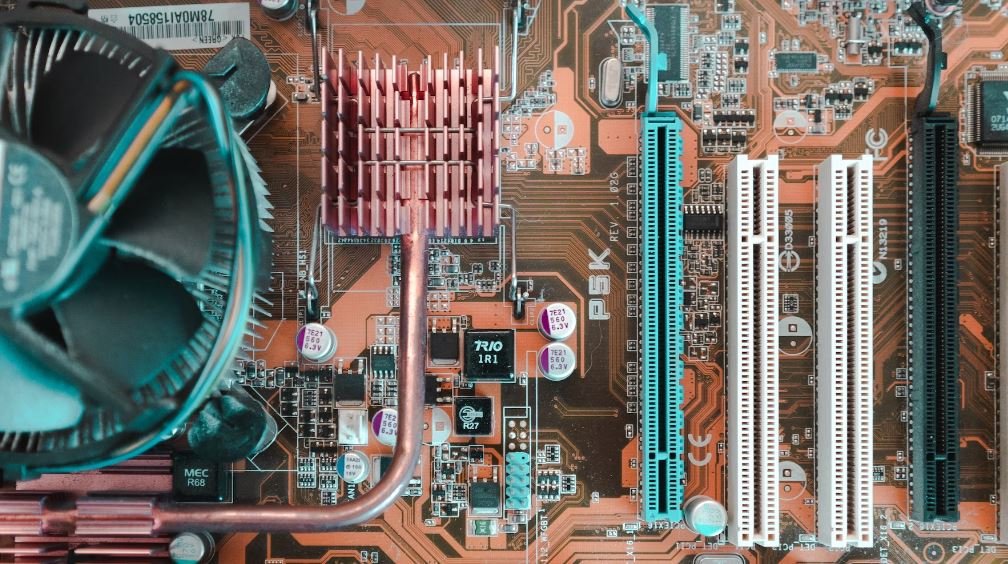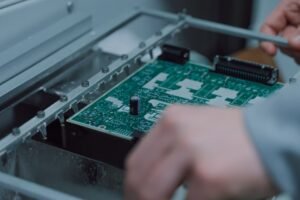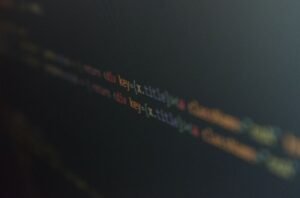Application vs Program
When it comes to computing, the terms “application” and “program” are often used interchangeably, leading to confusion among users. However, there are subtle differences between the two. Understanding these differences can help you make informed decisions about the software you use. In this article, we will explore the distinction between applications and programs, their characteristics, and use cases.
Key Takeaways:
- An application is a specific type of program designed to perform a particular task or set of tasks.
- Programs are broader and encompass a wide range of software applications.
- Applications are typically user-focused and have a graphical interface, while programs can be for both users and developers.
- Applications are built on top of operating systems, while programs can be independent entities.
Applications
Applications, also known as software applications or apps, refer to specific pieces of software designed to perform a particular task or set of tasks. They are typically user-focused and provide a graphical interface for interaction. Applications can be installed on a computer or accessed through the internet. They are built on top of existing operating systems and utilize their resources to execute desired functions. For example, web browsers, word processors, and photo editing tools are all examples of applications.
Programs
Programs are broader entities and encompass a wide range of software applications, tools, scripts, and more. While all applications are programs, not all programs are applications. Programs can be created for a specific purpose, such as a compiler or an operating system, or they can be developed to serve as a platform for building applications. While applications are typically used by end-users, programs can be used by both users and developers to create, manage, and deploy software. For instance, programming languages, software development kits (SDKs), and text editors are all examples of programs.
Main Differences Between Applications and Programs
Here is a comparison table highlighting the main differences between applications and programs:
| Applications | Programs |
|---|---|
| Specific software designed for a particular task. | Encompasses a wide range of software applications, tools, and scripts. |
| User-focused and provide a graphical interface. | Can be used by both users and developers. |
| Built on top of operating systems. | Can be independent entities. |
| Examples: web browsers, word processors, photo editing tools. | Examples: programming languages, SDKs, text editors. |
Uses of Applications and Programs
Applications and programs serve different purposes and find use in various fields. Here are some use cases for both:
Applications:
- Word processors for creating and editing documents.
- Graphic design tools for creating visual content.
- Accounting software for managing financial records.
- Video editing software for producing professional videos.
Programs:
- Compilers for translating source code to machine code.
- Operating systems for managing computer resources.
- Integrated development environments (IDEs) for coding software.
- Database management systems for storing and retrieving data.
Conclusion
In conclusion, while the terms “application” and “program” are often used interchangeably, distinguishing between the two can help clarify their respective roles and use cases. Applications are specific software designed for user-focused tasks, while programs encompass various software applications, tools, and scripts used by both users and developers. Understanding this distinction can assist you in making informed decisions about the software you use or develop.

Common Misconceptions
Application vs Program
There is a common misconception among people regarding the terms “application” and “program.” These two terms are often used interchangeably, but they actually have distinct meanings and functions in the world of technology.
- An application is a more extensive software package that consists of multiple programs and functionalities.
- A program, on the other hand, is a single set of instructions or a specific piece of software that performs a particular task.
- Applications are generally designed to provide a user-friendly interface and a range of features, while programs focus on accomplishing specific operations or functions.
Another misconception is that applications are always larger and more complex than programs. In reality, the size and complexity of applications and programs can vary greatly depending on their purpose and functionality.
- Some programs may be small and straightforward, developed to perform a single task efficiently.
- Applications, on the other hand, can be extensive and include multiple programs, databases, and other components to support various functionalities.
- Both applications and programs can be simple or complex, depending on the requirements and goals of their development.
People also tend to believe that applications are solely meant for use on mobile devices, while programs are for computers and laptops. This is not entirely accurate as both applications and programs can be developed for a variety of platforms.
- Applications can be created for mobile devices, such as smartphones and tablets, as well as for desktop computers and web browsers.
- Programs can also be developed for various platforms, including computer operating systems like Windows, macOS, or Linux.
- The distinction between applications and programs lies in their scope and functionality rather than the platform they are designed for.
Another misconception is that all applications require an internet connection, while programs can function offline. While some applications heavily depend on internet connectivity, not all applications require it, and the same applies to programs.
- Some applications, such as social media apps or streaming services, require an internet connection to access and update data in real-time.
- Other applications, like games or productivity tools, can work offline and synchronize data when internet connectivity becomes available.
- Similarly, some programs may require an internet connection to function properly, while others can function entirely offline.

The Difference Between Applications and Programs
In the world of technology, the terms “application” and “program” are often used interchangeably, leading to confusion among some users. However, there are significant differences between the two. An application refers to software designed to perform specific tasks or provide specific services to users, while a program is a set of instructions that a computer follows to perform a particular task. To provide a clearer understanding, here are ten tables that highlight various aspects of applications and programs.
Table: Purpose
This table illustrates the fundamental difference in purpose between applications and programs. While applications are built to serve specific functions or tasks for users, programs are designed to perform broader computational tasks.
| Applications | Programs |
|—————————|——————————-|
| Designed for end-users | Designed to solve problems |
| Serve specific functions | Perform general computations |
| User-friendly interfaces | May lack user interfaces |
| Focus on usability | Focus on computation |
| Examples: Word processors, social media apps | Examples: Operating systems, compilers |
Table: Implementation
This table showcases the differences in implementation between applications and programs. Applications are often built using high-level programming languages and frameworks, aiming for user-friendly interfaces and easy navigation. Conversely, programs are often developed using low-level programming languages to maximize computational efficiency.
| Applications | Programs |
|———————————|—————————–|
| Built using high-level languages| Developed using low-level languages |
| Utilize graphical user interfaces (GUI) | May not have GUI or use command-line interfaces |
| Accessible through various devices | Primarily run on specific platforms (e.g., Windows, Linux) |
| Examples: Mobile apps, web applications | Examples: Operating system kernels, software tools |
Table: User Interaction
This table demonstrates the contrasting user interactions between applications and programs. Applications focus on providing a smooth user experience with interactive interfaces, while programs often operate in the background, performing complex operations transparent to users.
| Applications | Programs |
|—————————–|———————————–|
| Interactive user interfaces| Minimal direct user interaction |
| Emphasize ease of use | Operate behind the scenes |
| Receive user input | May not require user input |
| Prompt user actions | May execute automatically |
| Examples: Gaming apps, productivity tools | Examples: System services, background processes |
Table: Complexity
This table highlights the varying levels of complexity between applications and programs. While applications focus on specific user requirements, programs tackle more intricate computations often related to system functionalities.
| Applications | Programs |
|———————————|————————————-|
| Generally less complex | Often deal with complex computations |
| Single or limited functions | Serve broader computational purposes |
| User-focused design | Focused on computational efficiency |
| Built for specific contexts | More adaptable, suited to new tasks |
| Examples: Music players, messaging apps | Examples: Image processors, network analyzers |
Table: Lifespan
This table illustrates the contrasting lifespans of applications and programs. Applications often undergo frequent updates and additions to address user needs and technology advancements, while programs tend to have more extended periods between major changes.
| Applications | Programs |
|———————————|————————————|
| Frequent updates and enhancements | Longer periods between major changes |
| Reflect user feedback | Adapt slowly to new requirements |
| May require regular maintenance | Stay relevant for extended periods |
| Users acquire newer versions | Often remain on a specific version |
| Examples: Social media apps, productivity tools | Examples: Statistical software, text editors |
Table: Resource Usage
This table showcases the differences in resource consumption between applications and programs. While applications focus on optimizing memory and processing power to enhance user experience, programs may prioritize computational efficiency and allocate fewer resources to user interaction.
| Applications | Programs |
|———————————|————————————-|
| Optimize memory & processing power | Focus on computational efficiency |
| Allocate more resources for user interaction | Allocate fewer resources to user interaction |
| Can have higher storage requirements | May require less storage space |
| Examples: Photo editors, e-commerce apps | Examples: Scientific simulations, data processing tools |
Table: User Base
This table presents the differences in user bases between applications and programs. Applications often have a target audience with specific interests or needs, while programs cater to a broader range of users.
| Applications | Programs |
|——————————–|—————————————|
| Targeted user base with specific needs | Aim to cater to various user requirements |
| May focus on specific industries or hobbies | Used across different industries and disciplines |
| Can be niche or specialized | More widespread user penetration |
| Examples: Fitness apps, recipe guides | Examples: Web browsers, database systems |
Table: Cost
This table compares the differences in cost between applications and programs. Application costs can vary significantly, from being free to paid with additional premium features, while programs may have fixed price points or subscription models.
| Applications | Programs |
|——————————–|—————————————|
| Can be free or freemium | Often have fixed prices or subscriptions |
| May include in-app purchases | May require licensing or per-use fees |
| Offer premium features at a cost | Can have tiered pricing for different functionalities |
| Examples: Mobile game apps, video streaming services | Examples: Graphic design software, financial applications |
Table: Development Time
This table demonstrates the variance in development time between applications and programs. While applications may require shorter development cycles due to specific functionality, programs often have longer development times due to the complexity and breadth of computational tasks.
| Applications | Programs |
|——————————–|——————————-|
| Can have shorter development cycles | Often require longer development times |
| Rapid iteration for feature enhancement | Iterative development with extensive testing |
| User feedback aids improvements | Systematic planning and design stages |
| Examples: Social media apps, online shopping apps | Examples: Operating systems, video editing software |
Table: Popularity
This table showcases the popularity differences between applications and programs. Applications, with their user-focused designs and functionalities, often garner extensive user bases, while programs target specific niches and may have fewer users but with specialized needs.
| Applications | Programs |
|———————————–|—————————————|
| Often have larger user bases | Cater to specialized user requirements |
| High download and usage statistics | May have lower user numbers |
| User reviews and ratings influence downloads | May rely on expert recommendations |
| Examples: Social media apps, streaming platforms | Examples: CAD software, statistical analysis tools |
Conclusion
The distinction between applications and programs lies in their purpose, implementation, user interaction, complexity, lifespan, resource usage, user base, cost, development time, and popularity. Applications primarily focus on providing specific functionalities, user-friendly interfaces, and optimizing user experience, whereas programs tend to tackle broader computational tasks with a focus on efficiency and adaptability. Understanding these differences empowers users to navigate the world of software more confidently, ensuring they select the appropriate tool for their specific needs.
Frequently Asked Questions
What is the difference between an application and a program?
An application is a software program designed to perform specific tasks or provide specific functionality to the user. A program, on the other hand, is a broader term that refers to any set of instructions written in a programming language that can be executed by a computer.
Can an application be considered a program?
Yes, an application can be considered a type of program. Applications are specific types of programs that are designed to perform specific tasks or provide specific functionality to the user.
What are some examples of applications?
Examples of applications include web browsers, word processors, spreadsheets, graphic design software, video editing software, and gaming applications.
Are all programs applications?
No, not all programs are applications. While all applications are programs, not all programs are designed to perform specific tasks or provide specific functionality to the user. Some programs may be system-level programs or utility programs that perform behind-the-scenes tasks.
How are applications and programs developed?
Both applications and programs are developed using programming languages such as C, C++, Java, Python, and more. Developers write code to create the desired functionality and then compile or interpret the code to obtain an executable file.
Can applications and programs run on any operating system?
It depends on how the application or program was developed. Some applications and programs are designed to be compatible with multiple operating systems, while others may be specifically developed for a particular operating system.
What factors determine whether something is an application or a program?
The main factors that determine whether something is an application or a program are its purpose and functionality. If it is designed to perform specific tasks or provide specific functionality to the user, it is more likely to be considered an application. If it is a set of instructions written in a programming language that can be executed by a computer without specific user interaction, it is more likely to be considered a program.
Can an application and a program be used interchangeably?
While there is overlap between the terms, it is generally more accurate to use “application” when referring to software designed for specific usage, and “program” when referring to a broader set of instructions written in a programming language. However, in many cases, the terms can be used interchangeably depending on the context.
Are applications and programs the same on mobile devices?
On mobile devices, the terms “application” and “app” are often used interchangeably. However, a mobile application or app is specifically designed for use on mobile devices and may have different functionality or user interfaces compared to programs on desktop or laptop computers.
Which term is commonly used in the software industry: application or program?
In the software industry, the term “application” is commonly used to refer to software designed for specific usage, while the term “program” is more general and can encompass a wider range of software. However, the usage of these terms can vary depending on the context and the preferences of individual developers or organizations.





